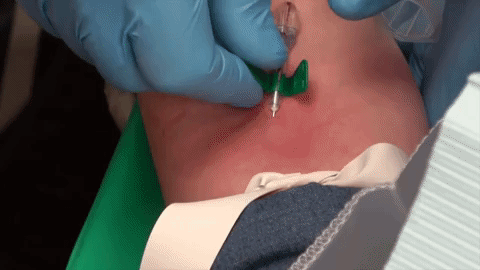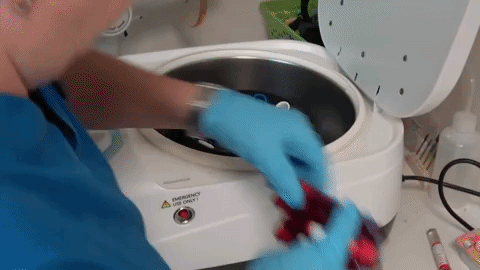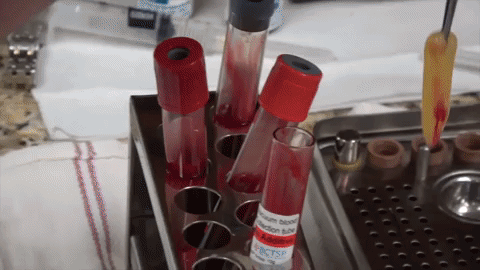| Platelet Rich Fibrin also known as PRF |
| Platelet rich fibrin also known as PRF has gained popularity for use in surgical procedures to help heal the site more rapidly and effectively through it’s potential ability to stimulate regeneration of a variety tissue types. What is it? It is the patient’s own blood collected at the time of the procedure into a vacuum vial through negative pressure. |

Samples must be immediately placed into a balanced centrifuge in order to avoid activation of coagulation cascade.

During the centrifuge process, thrombin transforms fibrinogen that is concentrated at the top of the vial into a fibrin network.

The platelet rich fibrin is then cut from the rest of the clot and flattened into the desired shape of surgical site. PRF is completely autologous and with it’s fibrous structure full of cytokines and growth factors serves as the perfect fibrin scaffold for cell migration.

| Platelet Rich Fibrin |
| PRF has gained reputation for its simplicity. The preparation of it is also quite cost effective. Unlike PRP (platelet rich plasma), PRF does not require activation by means of bovine thrombin or other extrinsic anticoagulants. It’s fibrous structure lays the supportive scaffold or a matrix that is slowly remodeled over a 10 day period enabling the slow release of growth factors and retaining platelets and cytokines in the surgical site. PRP has shown to release majority of its growth factors within the first day. PRF is a highly biocompatible matrix containing a reservoir of tissue growth factor and is said to enhance the recruitment and proliferation of a variety of cells, stimulating rapid regeneration of a wide variety of tissues in nature. Moreover, due to the increase in white blood cells and macrophages, the use of PRF offers some antibacterial defense in protecting the surgical site. |
Today’s Morning Huddle video was brought to you by Dr. Steven T. Cutbirth https://www.youtube.com/watch?v=4z7uj4I5kCg


